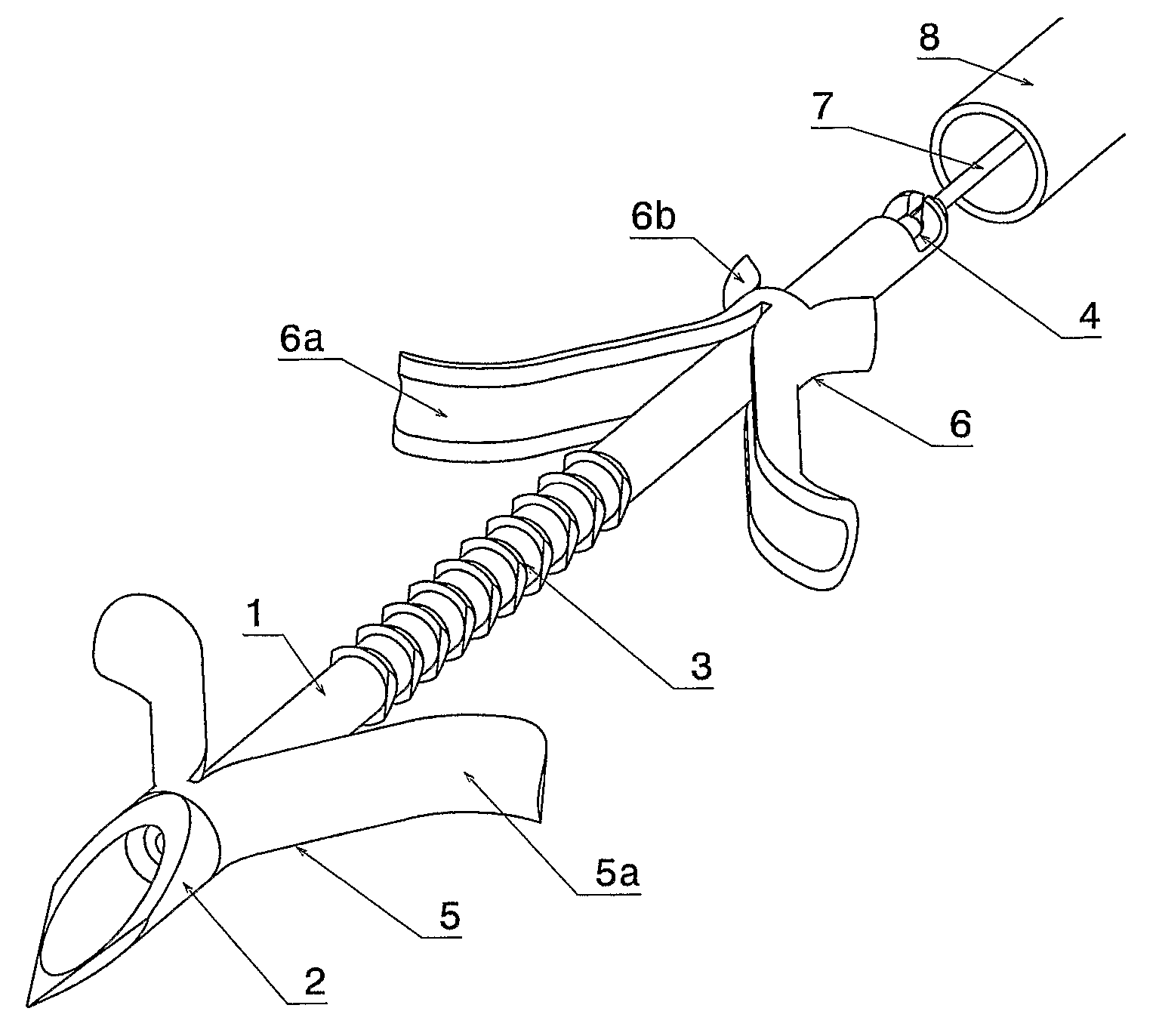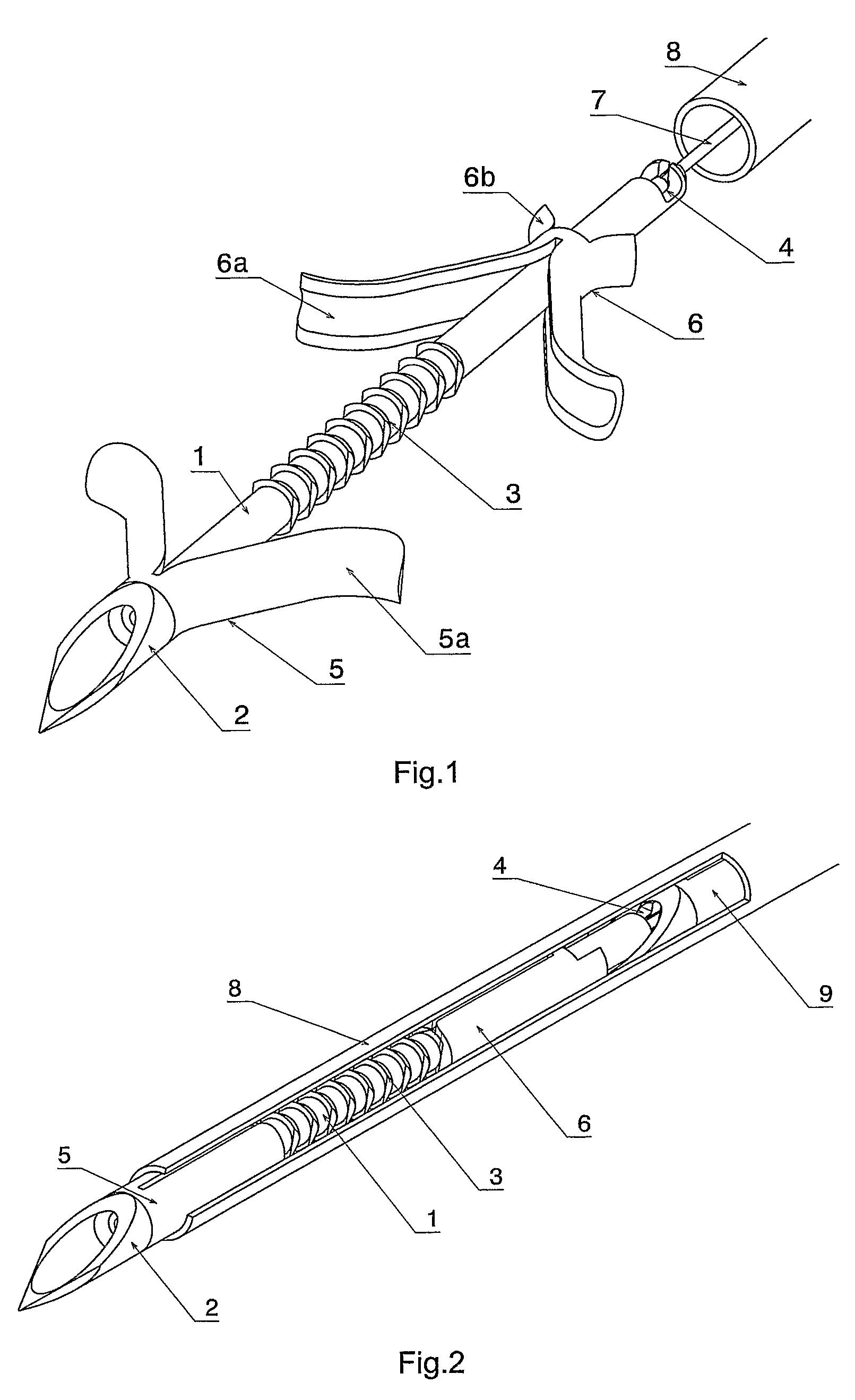Blind rivet for adapting biological tissue and device for setting the same, in particular through the instrument channel of an endoscope
a blind rivet and biological tissue technology, applied in the field of self-piercing blind rivets, can solve the problems of inconvenient suturing, difficult endoscopy use, and additional instruments, and achieve the effects of reducing the risk of infection, and reducing the safety of surgical instruments
- Summary
- Abstract
- Description
- Claims
- Application Information
AI Technical Summary
Benefits of technology
Problems solved by technology
Method used
Image
Examples
Embodiment Construction
[0023]The preferred embodiments of the present invention will now be described with reference to FIGS. 1-11 of the drawings. Identical elements in the various figures are designated with the same reference numerals.
[0024]The rivet, as shown in its relaxed form in FIG. 1, consists essentially of three parts. A tubular carrier 1 is provided at the distal end with a tip 2, in the middle part with an arresting castellation 3 and, at the proximal end, with a coupling element 4. Two clips 5 and 6 are mounted on the carrier, the distal clip 5 being axially fixed and the proximal clip 6 being displaceable in the distal, axial direction and being held in the opposite direction by the arresting castellation. The distal clip consists of a basic, cylindrical body from which two arms 5a branch out. The proximal clip also consists of a basic, cylindrical body, from which two arms 6a, as well as two wings 6b spread out. Within the carrier, there is an actuating element 7 with a latch at the distal...
PUM
 Login to View More
Login to View More Abstract
Description
Claims
Application Information
 Login to View More
Login to View More - R&D
- Intellectual Property
- Life Sciences
- Materials
- Tech Scout
- Unparalleled Data Quality
- Higher Quality Content
- 60% Fewer Hallucinations
Browse by: Latest US Patents, China's latest patents, Technical Efficacy Thesaurus, Application Domain, Technology Topic, Popular Technical Reports.
© 2025 PatSnap. All rights reserved.Legal|Privacy policy|Modern Slavery Act Transparency Statement|Sitemap|About US| Contact US: help@patsnap.com



